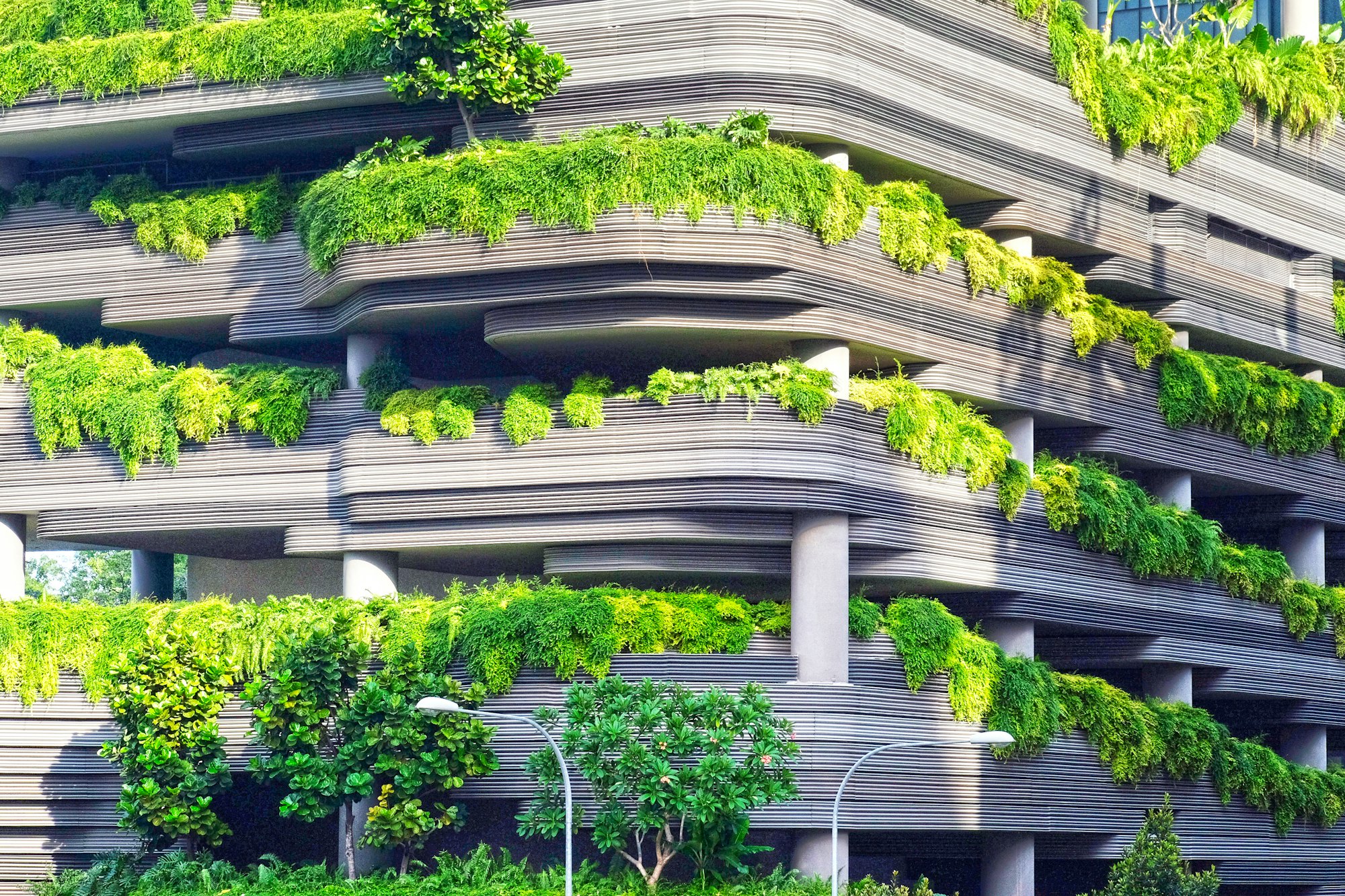
💡 Optimist's Edge: Taking cement from 8% to 0% of global CO2 emissions
💡 New green cement could reduce up to eight percent of global CO2 emissions, and also be stronger and cheaper.
Share this story!
📉 What people think
A very common proposed solution to solving climate change is doing less of things that emit CO2 into the atmosphere. Traveling less, eating less meat, building less.
📈 Here are the facts
Cement is responsible for around 8 percent of global CO2 emissions. To reduce that to zero we would need almost completely to stop building things.
Instead of doing less, we can invent more. Like zero-carbon cement.
Concrete is the most widely used building material in the world. It's composed of an aggregate (crushed stone or gravel), sand, and a binder (usually cement) which hardens the mix by reacting with water. The main component of cement is clinker, obtained from clay and limestone by firing in a particular type of kiln.
The recipe remained virtually unchanged for more than a century.
The environmental issue
- About 90 percent of the cement sector emissions are linked to the production of clinker: in addition to fossil fuels generally burned to reach the very high temperatures (up to 1450°C) required inside the kiln, the issue is that limestone is by its nature a highly reactive material and releases a lot of CO2 during the calcination reaction taking place inside the kiln.
- Industry studies indicate that increasing the kiln thermal efficiency or switching to renewables is not enough. It's necessary to find significant variants to the traditional clinker recipe.

A wide range of inventions
- Novel cement: Completely new binder mix is being proposed to replace clinker. The Australian company Zeobond is producing since 2006 cement made with Geopolymers, based on aluminum and silicon instead of calcium and silicon. These very low-energy materials (against the highly reactive limestone) can reduce the carbon footprint by around 80 percent.
- CO2 as a valuable raw material: The start-up Solidia Technologies, in partnership with the world leader LafargeHolcim, is testing low-lime calcium silicate clinker (CCSC) with extraordinary properties: not only the CO2 emissions emitted during its manufacture are reduced by 30%, but the cement reacts with CO2 (and not with water) transforming it from a global issue to a valuable good. In addition to lowering by 70 percent carbon footprint compared to traditional Cement, the CCSC cement cures to reach full strength in a single day against the approximately 28 needed for standard cement!
- Circular economy concrete: Waste materials are also tested as new raw materials. CarbiCrete company is testing a steel slag-based mixture that hardens with CO2 to replace cement, while Blue Planet is trying to use concrete waste and CO2 to reproduce through Geomimesys the earth's natural process of creating carbonate rocks or limestone, in place of aggregates. Using waste materials and CO2 as a value makes the materials carbon negative.
- Bacteria-based cement: At the University of Colorado Boulder they are doing science-fiction studies. In 2020 they published a study to make a living cement by inoculating Bacteria in a solution of sand and gelatin. Bacteria can absorb carbon dioxide to grow and produce calcium carbonate and thus cement. Since they are living beings, they can grow on command and self-heal cracks.

- Algae-based cement: In 2022 the University of Colorado research team switched to studying algae-based cement. By mimicking the coral reef structure, using microalgae, sunlight, seawater and dissolved carbon dioxide they invented a process to create new limestone in minutes rather than millions of years.
- Disruptive technological change: The first CO2 capture systems are being built to recover CO2 emissions from the cement production plants and store them in safe deposits or turn them into carbon-negative chemical products.
- And what about totally changing the perspective?


Further challenges
- It's necessary to radically change practices consolidated for over a hundred years in order to reduce their environmental impact. Technicians and workers must be well trained to use the new necessary equipment on site (i.e. CO2 injection systems). For example, augmented reality can be used to train builders on-site and facilitate the use of novel cement
- Develop supply chains for new raw materials that can supply them with the same ease and cost as the traditional cement components
- Standardize the industry: Transform the standard on-site building model and enhance the construction of prefabricated structures within the factories to increase flexibility for change. Another possibility is additive manufacturing: for example in China, the company Winsun 3D built the first continuous 3D printer for construction. In 2013 it printed layer-by-layer 10 two-story concrete houses with a special ink based on cement, sand and fiber, together with a proprietary additive. The printing process took only three days and three workers

💡 Optimist's Edge
The cement industry is making a great effort to develop new patented solutions not only to reduce but even eliminate CO2 emissions.
The construction sector is traditionally slow to change, but the time is ripe, the inventions are manifold and the investments are huge.
💡 New green cement could reduce up to 8 percent of global CO2 emissions, and also be stronger and cheaper.
Many of these new types of cement also improve the technical properties of concrete, reduce processing times and potentially also costs.

👇 How to get the Optimist's Edge
It's time for a change, but the great transformation is still slow. Being at the forefront can bring great results to those who dare to take risks.
❓ So, how do you get the most out of this knowledge?
- Do you have to move house or renovate it? Be open-minded! Large construction companies and traditional materials are certainly a safe choice but maybe trying a start-up that offers innovative cement, or even a new bio-based material, could bring surprises: not just sustainability but even faster work, lower cost or peerless comfort.
- Do you work or study as a civil engineer, surveyor, architect or in any role in the construction field? Anticipate change and be an innovation maker: Read and experiment with innovative raw materials, find out how to design structures based on waste, algae, bacteria and how to build them on-site.
- Innovative projects are mostly still in the demonstration phase or growing strongly, so any help is needed. Invest or apply to work in the most interesting projects, such as the start-up Minus Materials to create cement with algae, Bio Mason to work with bacteria, Solidia Technologies, Blue Planet, Carbon Cure, Skyonic to create value from CO2, at CarbiCrete or Celitement to design novel cement or Winsun 3D in China to print houses or even at Norcem in Norway to participate in building the first zero-carbon cement factory.
- We saw that many fast-growing sectors are very important for a radical change in the building field, such as Virtual Reality, Automation, Additive Manufacturing but also AI, Big data, sensors. Even if you operate in these sectors it could be interesting to explore new technologies for building, creating start-ups or partnerships with construction companies.
You now have an advantage because you have gained this knowledge before most others –
